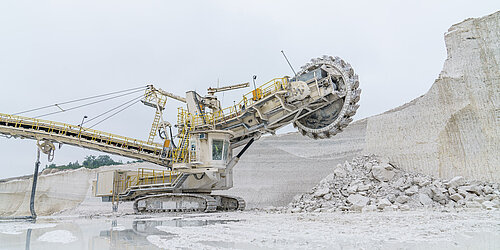Prof. Lars-André Tokheim is professor in Process Technology at the University of South-Eastern Norway (USN). His main research areas are calciner technologies, alternative fuels and CO2 capture in the cement industry.

Copyright: Ingvild Gjone Sildnes, USN
Electrification of the calciner may reduce the emissions by up to 80 percent. Hence, the calciner has the highest potential for CO2 reduction.
In your opinion, which steps, in which order and in which timescale will the cement industry take to achieve the aim of being completely climate neutral?
We must work on different measures in parallel. Use of partly CO2 neutral fuels to replace fossil fuels is a low-hanging fruit which should be utilized first. However, this measure can only reduce CO2 by 10 to 20 percent, and there is a limited amount of alternative fuels available. The same can be said about partial replacement of clinker in cement, for example by using fly-ash or slag. Some low-carbon raw materials can be used to replace limestone in raw meal production, but the potential is likely quite low. None of the three measures mentioned above can completely eliminate the CO2 footprint. Therefore, CO2 capture is required to obtain climate neutrality within the next 30 years. Electrification makes it possible to eliminate fuel combustion and at the same time generate a pure CO2 stream which can be captured. This integrated concept makes sense if the power is generated from renewable energy sources.
How do you assess the potential of electrifying the calcination process? Is it possible to easily convert or replace all conventional calciners?
Different electricity-to-heat concepts may be applied, for example resistance heating, plasma heating or oxy-combustion of green hydrogen generated by electrolysis of water. But none of the concepts are easy to implement, and some of them have quite low efficiencies. Resistance heating appears to have the highest efficiency, but there are challenges. One of them is to find materials that have the right combination of thermophysical properties and mechanical strength at high temperature. Another challenge is to identify reactor options that provide sufficiently high overall heat transfer coefficients, not only at lab-scale, but also at full-scale conditions.
Why does it make sense to electrify exactly this process step in cement production? What is the background for this decision?
The raw meal production and cement grinding processes are already electrified, so the kiln process is the only one left to electrify. Focusing on the kiln system, about 90 percent of the process-generated CO2 comes from the calciner, about 60 percent of the thermal energy is used in the calciner, and around 35 percent of the CO2 emission is due to fuel combustion. By combining these numbers, it can be shown that electrification of the calciner may reduce the emissions by up to 80 percent. Hence, the calciner has the highest potential for CO2 reduction. Moreover, the calciner operates at a much lower gas temperature (around 900 degrees Celsius) than the rotary kiln (around 2,000 degrees Celsius), and this makes it less difficult to electrify the calciner. It is apparently also easier to avoid false air intrusion in the calciner than in the rotary kiln.
About
Prof. Lars-André Tokheim
Professor in Process Technology | University of South-Eastern Norway (USN)
Tokheim is professor in Process Technology at the University of South-Eastern Norway, where he combines teaching, student supervision and research. Before starting his academic career in 2006, he worked in the cement industry. He has a PhD on combustion of alternative fuels in cement kilns (1994 to 1998), he worked as a process engineer at Norcem Brevik from 1998 to 2001, then as manager of process development and environment at the same plant from 2001 to 2006. His main research areas are calciner technology, alternative fuels and CO2 capture in the cement industry. He has for many years cooperated with the industry, in particular Norcem, in different research projects, such as the ongoing ELSE project on electrified cement production.
Further information: www.usn.no
Über die Interviewreihe
In der Rubrik „Drei Fragen an...” kommen Fachleute aus den energieintensiven Industrien zu Wort. Sie geben Einblick in branchenspezifische Aspekte der Dekarbonisierung und sprechen über Strategien für eine klimaneutrale Industrie.
Alle Interviews
